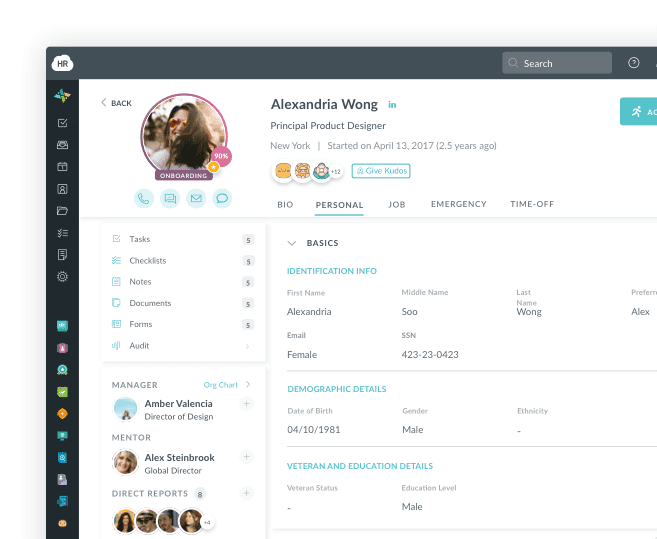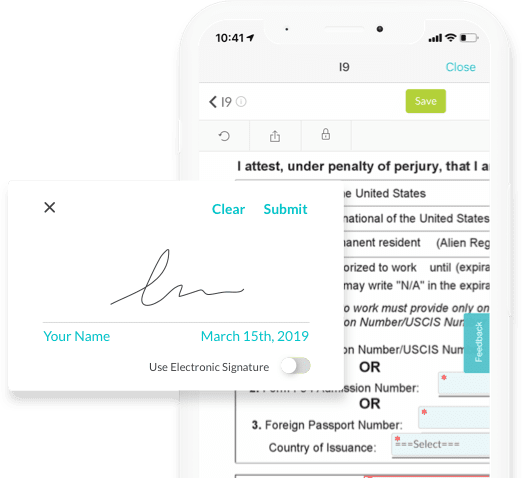Human Resources, often referred to as the heart of an organization, encompasses a vast array of responsibilities that go far beyond organizing office parties and company picnics. HR leaders are tasked with handling a myriad of compliance issues related to employees, ensuring that organizations adhere to the ever-evolving web of rules and regulations.
In 2023 and beyond, HR leaders face a landscape of complex challenges.
In this article, we'll delve into the five toughest HR compliance issues that every HR leader should be well-versed in.
1. Identifying the Applicable Compliance Requirements
The first hurdle HR leaders must overcome is identifying the compliance requirements that apply to their specific organization. While some compliance rules, such as employment taxes and wage garnishments, are universal, many others are intricate and nuanced, requiring a deep understanding to navigate effectively.
Some HR compliance rules, like interpreting the Family and Medical Leave Act (FMLA) or determining whether an intern should be paid, leave room for interpretation. HR professionals must possess a strong grasp of these laws to ensure compliance.
Understanding business size is also crucial, as certain compliance laws only apply to organizations with a specific number of employees. For instance, businesses with 50 or more employees may have different compliance requirements than smaller organizations.
To help HR leaders tackle this challenge, comprehensive checklists can be a valuable tool for determining which compliance laws are relevant to their business. These checklists serve as a roadmap, guiding HR professionals through the complex maze of regulations.
2. Employee Benefits Regulations
Employee benefits play a pivotal role in attracting and retaining talent. However, understanding which benefits are legally required and which ones are voluntary can be bewildering for HR leaders.
-
Mandatory Benefits: Federal laws mandate certain employee benefits, such as Social Security, Medicare, unemployment insurance, and Family and Medical Leave Act (FMLA) protections.
-
State-Specific Requirements: Adding to the complexity, state laws often impose additional requirements. For instance, disability insurance is mandatory for employers in California, Hawaii, Rhode Island, New Jersey, and New York.
-
Affordable Care Act (ACA): Under the ACA, applicable large employers (ALEs) must provide adequate and affordable health coverage to their full-time employees or face potential penalties. The rules around ACA compliance can be intricate, especially for large organizations.
Navigating this intricate web of federal and state requirements demands vigilance and expertise from HR professionals. Compliance is not merely a matter of offering benefits but also ensuring that they align with legal obligations.
Take Advantage of E-Forms, Time-Off Tracking, and Other Powerful Features to Help Drive Your Bussines
Learn More about HRMS
3. Complying with Wage Laws
Payroll management is often underestimated in its complexity. A small error can lead to disgruntled employees and significant legal consequences. Several factors contribute to the complexity of payroll compliance:
- Ever-Changing Laws: Payroll laws are constantly evolving, necessitating ongoing vigilance to stay up-to-date.
- Taxation Challenges: Managing various taxes, including income tax, Social Security taxes, and unemployment taxes, can be overwhelming. Ensuring accurate calculations and deductions is essential.
- Employee Attendance: Accurately tracking employee attendance and time off is a critical component of payroll calculations. Implementing HR software can streamline this process.
- Outsourcing and PEOs: Outsourcing HR functions or using a Professional Employer Organization (PEO) can provide valuable support in managing payroll and ensuring compliance.
Given the intricacies and potential pitfalls, HR leaders must approach payroll compliance with diligence and consider outsourcing or partnering with experts in the field.
4. Anti-Discriminatory Hiring Processes
The shift to remote work and virtual interviews in recent years has highlighted the importance of compliance in the recruiting process. HR leaders must ensure that hiring practices align with anti-discrimination laws, both in-person and in virtual settings.
Innocuous-sounding questions related to personal matters, such as marital status or religious beliefs, can inadvertently lead to discriminatory hiring practices. That’s why HR professionals must educate both executives and hiring managers on what is considered discriminatory and provide compliance-approved interview scripts.
With remote hiring becoming the norm, HR leaders must adapt to new challenges in maintaining compliance during virtual interviews.
Creating a culture of compliance in the hiring process is essential to avoid legal complications and uphold the organization's reputation.
5. Correctly Classifying Workers
Worker classification remains a thorny issue for HR leaders, as federal and state laws often lack precise definitions for terms like "full-time," "part-time," and "temporary" employees. Inconsistent classification can lead to eligibility issues regarding benefits, overtime pay, and tax status.
Organizations often employ various worker classifications, including full-time employees, part-time employees, independent contractors, interns, and volunteers.
To mitigate confusion and legal risks, HR leaders should establish consistent employment classification policies throughout the organization.
Accurate worker classification is critical to ensuring that employees receive the benefits and protections they are entitled to under the law. HR leaders must maintain a clear understanding of these classifications and enact policies that reflect the reality of their workforce.
Best Practices to Ensure HR Compliance
Navigating the intricate landscape of HR compliance can prove to be a formidable challenge. To streamline this process and ensure your organization stays on the right side of the law, consider implementing the following best practices.
1. Comprehensive Documentation
One of the foundational pillars of HR compliance is having meticulously documented policies and procedures in place. This documentation should be readily accessible to all employees, providing them with a clear understanding of the rules and expectations within your organization.
When onboarding new hires, invest in comprehensive orientation programs to acquaint them with their roles, responsibilities, and rights.
Moreover, in the realm of HR compliance, where meticulous record-keeping is paramount, the concept of data archiving emerges as a crucial component.
Organizations are flooded with vast amounts of employee data, from personnel records to payroll information. Data archiving, the process of securely storing historical data for long-term retention, plays a pivotal role in addressing HR compliance challenges.
2. Continuous Employee Communication
Maintaining a culture of compliance requires ongoing communication with your employees. Regularly engage with your workforce on matters related to ethical conduct and best practices.
Employees should not only be aware of these standards but also feel comfortable raising concerns and reporting any undesirable activities they may come across. Encourage an environment where open dialogue is not just encouraged but valued.

3. HR Assessments
Consider enlisting the services of seasoned HR professionals to conduct comprehensive assessments of your business operations. These experts possess a keen eye for identifying areas where compliance may be lacking or where improvements can be made.
An HR assessment can be an invaluable tool in proactively addressing HR compliance issues within your industry, helping you mitigate potential risks before they escalate.
4. Stay Informed
The landscape of regulations is dynamic and subject to change, whether at the local, state, or federal level. To ensure ongoing compliance, it's crucial to stay informed about any regulatory modifications that may affect your organization.
Regularly monitor updates in HR-related legislation and be prepared to adapt your policies and practices accordingly. Staying ahead of the curve can prevent costly compliance violations down the road.
5. Engage Experienced Consultants
HR compliance can be a complex and time-consuming endeavor. Collaborating with experienced HR consultants can be a strategic move to alleviate the burden of HR compliance issues.
These professionals possess a deep understanding of the regulatory landscape, knowing which regulations your organization must adhere to and how to navigate HR-related compliance areas effectively.
By partnering with seasoned consultants, you can free up valuable time and resources, allowing you to focus on other critical aspects of your business while maintaining a high level of compliance assurance.
Wrapping Up
In conclusion, the role of HR leaders in ensuring compliance within organizations is paramount. In 2023 and beyond, the ever-evolving landscape of HR compliance issues will continue to challenge HR professionals.
By staying informed, leveraging technology, and seeking expert guidance when needed, HR leaders can navigate these complex issues and uphold the integrity of their organizations while fostering a culture of compliance.
Is Your Company's Culture
Working Against You?
culture with our short quiz.
Author Bio
Alex Morgan is a passionate tech blogger, internet nerd, and data enthusiast. He is interested in topics that cover data regulation, compliance, eDiscovery, information governance and business communication.
Keep Reading
Retention Reset: How to Keep Your Best Talent in 2025
More employees are walking away from their jobs in 2025 not just for better pay, but for
Remote Onboarding Done Right: A Step-by-Step Guide for HR Teams
Remote onboarding is the process of welcoming new employees who work from home or


